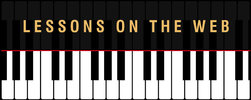|
16th notes are a bit intimidating when we first encounter them in our piano music. They just look so fast! They are fast, but the good news is that we can learn them slowly. If you are at the place that you’re ready to learn to count 16th notes, then you already know how many beats whole notes, half notes, quarter notes and eighth notes get and how to count them. There is a common pattern among all of these note durations that’s very interesting. If you divide a whole note into 2, you get 2 half notes. If you divide a half note into 2, you get 2 quarter notes. If you divide a quarter note into 2, you get 2 eighth notes, and guess what…if you divide an eighth note into 2, you get two 16th notes. Dividing the larger note duration in half gives you 2 of the next smaller note duration…always. Think about this now…if there are two 16th notes in one eighth note, how many 16th notes are in a quarter note? Four…that’s right. Why? Because there are 2 eighth notes in a quarter note…so if there are two 16th notes in an eighth note, then we need to double that to get enough beats to make a quarter note. When it comes to counting each of these types of note durations, we have to learn how to count each one separately first. For this lesson, we’re using a 4/4 time signature which means that there are 4 beats in each measure and the quarter note gets the beat. In other words, there are 4 quarter beats in each measure.
Now we come to notes that have beats that are less than 1 whole beat…such as 8th notes and 16th notes. There is an easy way to count these notes as well. It’s easiest to start with 8th notes. These notes get just ½ a beat so we have to come up with something that comes after “1” to represent the second half of that beat. In this case, we say “&”. As in…1& 2& 3& 4&. We’ve divided the 1 beat into 2 by saying the name of the beat plus the word and/& by it..which gives us to 8th beats per quarter beat. This is called subdivision and we can subdivide many different types of notes, not just 8th notes. Subdividing larger beats into smaller ones makes all of the beats in a measure fit together much easier and helps us play the rhythms correctly. Counting 16th notes in this way means that we have to come up with another syllable for the extra beat…remember, we have four 16th notes in each quarter instead of two 8th beats like we did earlier. If we count 8th notes by saying: 1& 2& 3& 4&, we’re going to now count our 16th notes by saying: 1e&a 2e&a 3e&a 4e&a. Notice that we still have the “&” in there, but it comes after the “e” for the second 16th, and then we have the “a” for the fourth 16th in this pattern. The 1 and the & still fall on the same 8th beats as before, but the additions are for the second half of the 8th beats represented by 16th notes in this case. Anytime you encounter a mixture of note values in your piano music, all you have to do is subdivide the larger note duration into the smaller note duration; such as dividing a quarter note into 8th beats, or an 8th note into 16th beats. You simply have to remember how to count each of the different patterns and you can then apply that to any note duration you need to. I show you lots of examples of this in music and at the keyboard in the following video. It will really help all of this make sense and you can hear me pronounce how to say these counts and we’ll play them on the piano as well. If you like my tips and lessons, you will love the courses over on my website. Whether you are a beginner looking to get a solid foundation to build on or you are looking to take you existing skills to that next level, the online music courses on my website https://www.pianolessonsontheweb.com will help you do just that.
Leave a Reply. |
AuthorMost blogs written by Archives
June 2020
Categories
All
|

 RSS Feed
RSS Feed